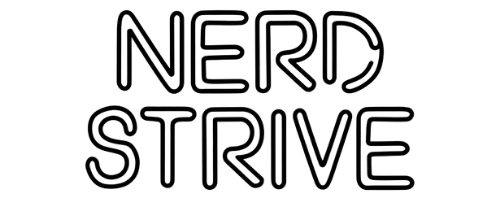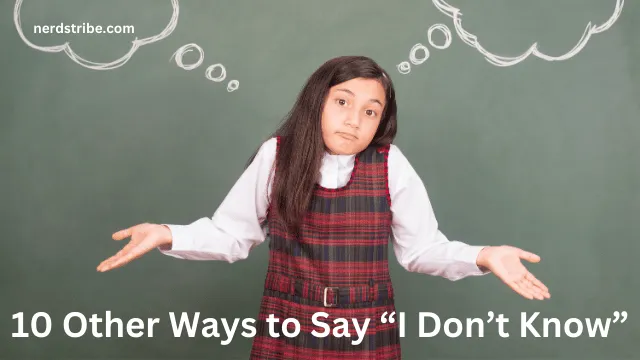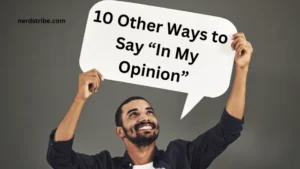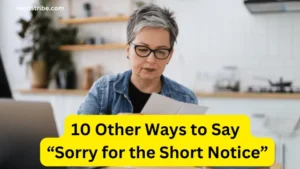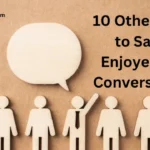No one has all the answers, but saying “I don’t know” can sometimes feel awkward or unhelpful, especially in professional or social settings. While honesty is important, the way you express uncertainty can influence how others perceive your competence and attitude.
Finding alternative ways to convey “I don’t know” can show thoughtfulness, willingness to learn, or confidence in your ability to seek answers. Words carry power, and even a simple phrase like “I don’t know” can be reframed to inspire trust, maintain credibility, and keep conversations productive.
By using creative and intentional alternatives, you can avoid sounding dismissive or indifferent and instead show that you’re engaged in finding a solution.
In this blog post, we’ll explore 10 effective alternatives to “I don’t know” that you can use in various situations. Whether you’re in a work meeting, a casual conversation, or responding to a tough question, these phrases will help you communicate with clarity and confidence. Let’s dive in!

Contents
- 1 1. “Let Me Find Out”
- 2 2. “That’s a Great Question”
- 3 3. “I’m Not Sure, But Here’s What I Think”
- 4 4. “I’ll Need to Double-Check”
- 5 5. “I Don’t Have That Information Right Now”
- 6 6. “I’m Still Learning About That”
- 7 7. “I’d Like to Know More Before Answering”
- 8 8. “Let Me Get Back to You on That”
- 9 9. “I Haven’t Encountered That Before”
- 10 10. “What Do You Think?”
- 11 Conclusion
- 12 FAQs
- 12.1 Why should I avoid saying “I don’t know” outright?
- 12.2 Which alternative works best in professional settings?
- 12.3 Are these alternatives suitable for casual conversations?
- 12.4 How can I build credibility while admitting uncertainty?
- 12.5 Can these alternatives be used in emails or written communication?
- 12.6 What if I don’t have time to find the answer?
1. “Let Me Find Out”
This shows initiative and a willingness to seek answers.
- Example: “I’m not sure, but let me find out and get back to you.”
- Essential: It conveys that you care about providing accurate information.
2. “That’s a Great Question”
Acknowledging the question creates a positive impression.
- Example: “That’s a great question—I’ll need to look into it.”
- Essential: It’s a polite way to admit uncertainty without losing credibility.
3. “I’m Not Sure, But Here’s What I Think”
Offering a tentative answer shows thoughtfulness and effort.
- Example: “I’m not sure, but I believe the deadline might be next Friday.”
- Essential: Use this when you can provide a partial answer or educated guess.
4. “I’ll Need to Double-Check”
This implies carefulness and attention to detail.
- Example: “I’ll need to double-check the figures and confirm.”
- Essential: Perfect for situations where precision is crucial.
5. “I Don’t Have That Information Right Now”
This phrase sets realistic expectations.
- Example: “I don’t have that information right now, but I can look into it.”
- Essential: It’s professional and avoids sounding dismissive.
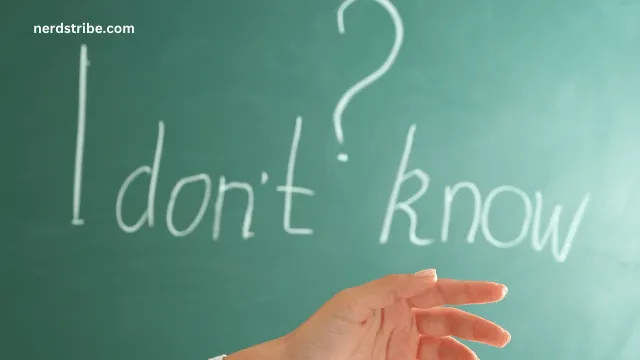
6. “I’m Still Learning About That”
This phrase reflects humility and growth.
- Example: “I’m still learning about that topic, but I’d be happy to research it further.”
- Essential: It works well when discussing complex or new subjects.
7. “I’d Like to Know More Before Answering”
This shows a thoughtful and cautious approach.
- Example: “I’d like to know more before answering definitively.”
- Essential: Ideal for avoiding rushed or uninformed responses.
8. “Let Me Get Back to You on That”
A classic and polite way to follow up.
- Example: “Let me get back to you on that after I’ve done some research.”
- Essential: It’s a professional response for delaying your answer.
9. “I Haven’t Encountered That Before”
This phrase admits inexperience while keeping the tone positive.
- Example: “I haven’t encountered that before, but I’ll look into it.”
- Essential: It’s useful when addressing unfamiliar scenarios.
10. “What Do You Think?”
Turning the question around encourages collaboration.
- Example: “I’m not sure—what do you think about this approach?”
- Essential: Great for promoting discussion and brainstorming.
Conclusion
Saying “I don’t know” doesn’t have to be a dead end in communication. By using these alternatives, you can maintain confidence, show willingness to learn, and keep conversations productive. Each phrase is designed to fit different contexts, from casual chats to professional meetings, and can be tailored to your unique tone and style.
Remember, admitting you don’t know something is not a weakness—it’s an opportunity to grow, collaborate, and build trust. Next time you face an unexpected question, consider using one of these phrases to leave a positive impression and keep the dialogue flowing.
FAQs
Why should I avoid saying “I don’t know” outright?
While honesty is essential, saying “I don’t know” without context can come across as dismissive or unhelpful. Alternatives provide clarity and maintain engagement.
Which alternative works best in professional settings?
“Let me find out” or “I’ll need to double-check” are excellent for maintaining professionalism and showing accountability.
Are these alternatives suitable for casual conversations?
Yes! Phrases like “That’s a great question” or “I’m still learning about that” work well in both formal and informal settings.
How can I build credibility while admitting uncertainty?
Pair your response with a plan to find the answer, such as “Let me get back to you on that.” This shows initiative and responsibility.
Can these alternatives be used in emails or written communication?
Absolutely. Phrases like “I’ll need to double-check” or “Let me find out” are great for written responses to maintain a professional tone.
What if I don’t have time to find the answer?
Be transparent and suggest alternatives, such as “I recommend checking with [another source] for more details.” This keeps the conversation moving
